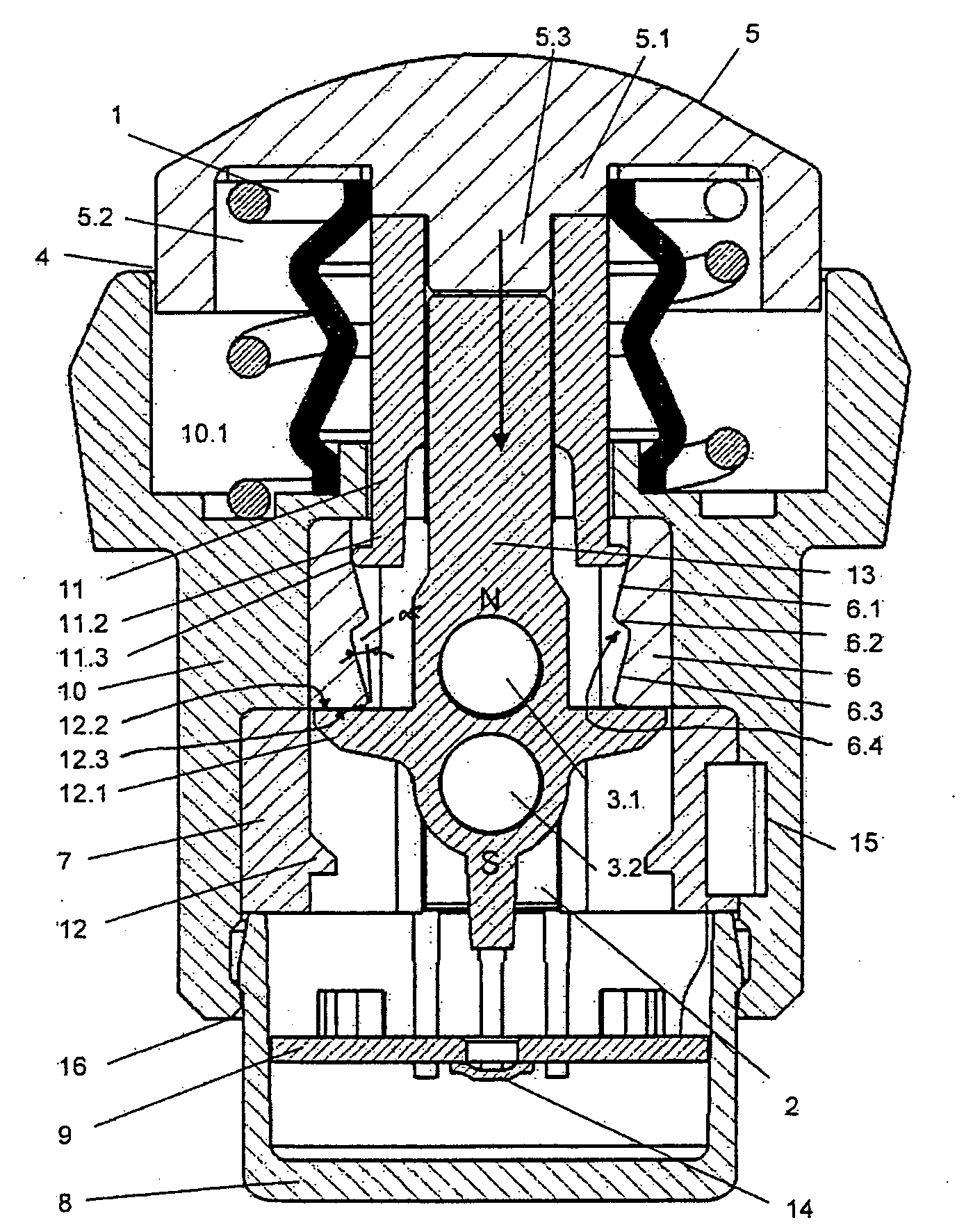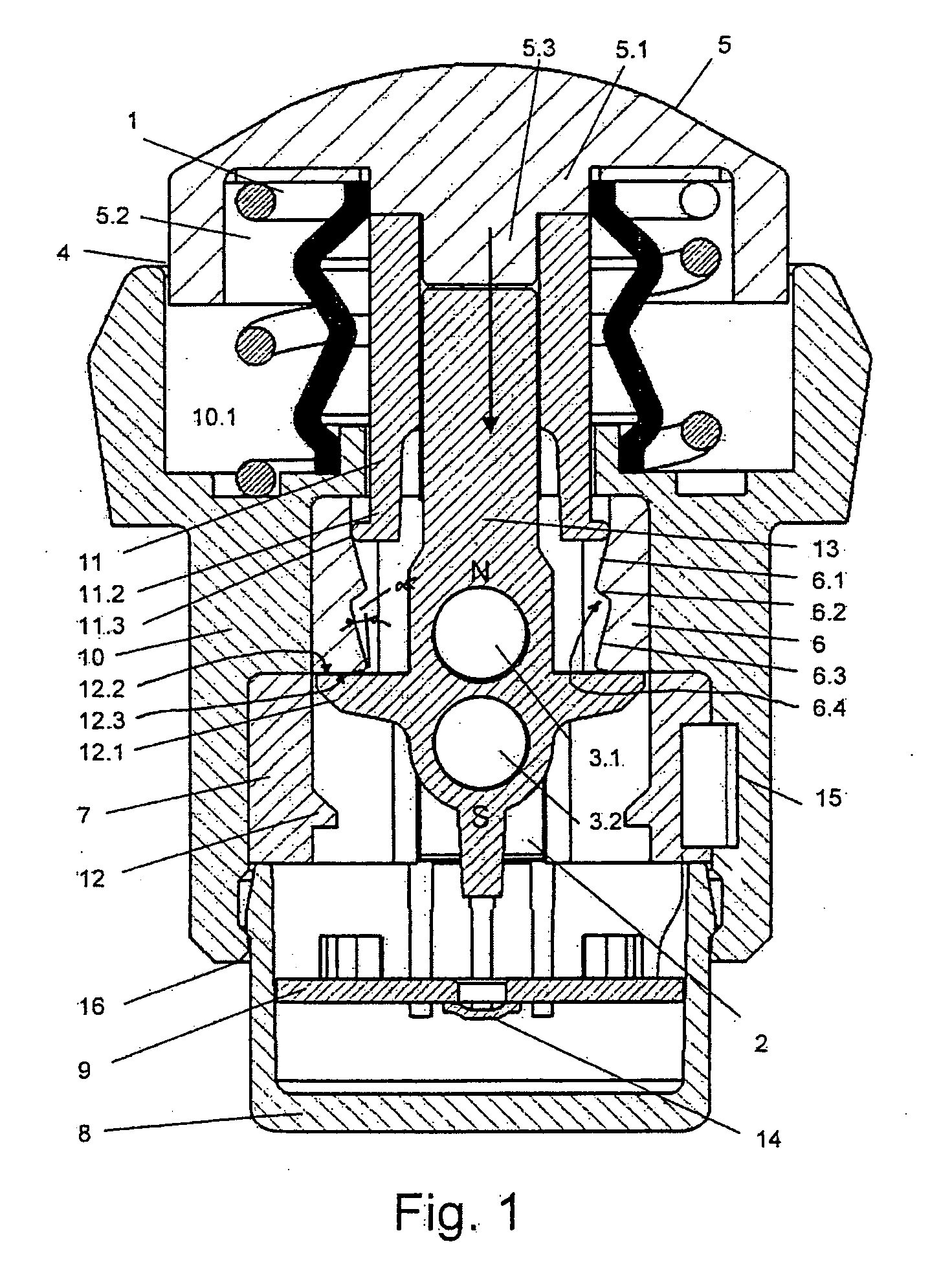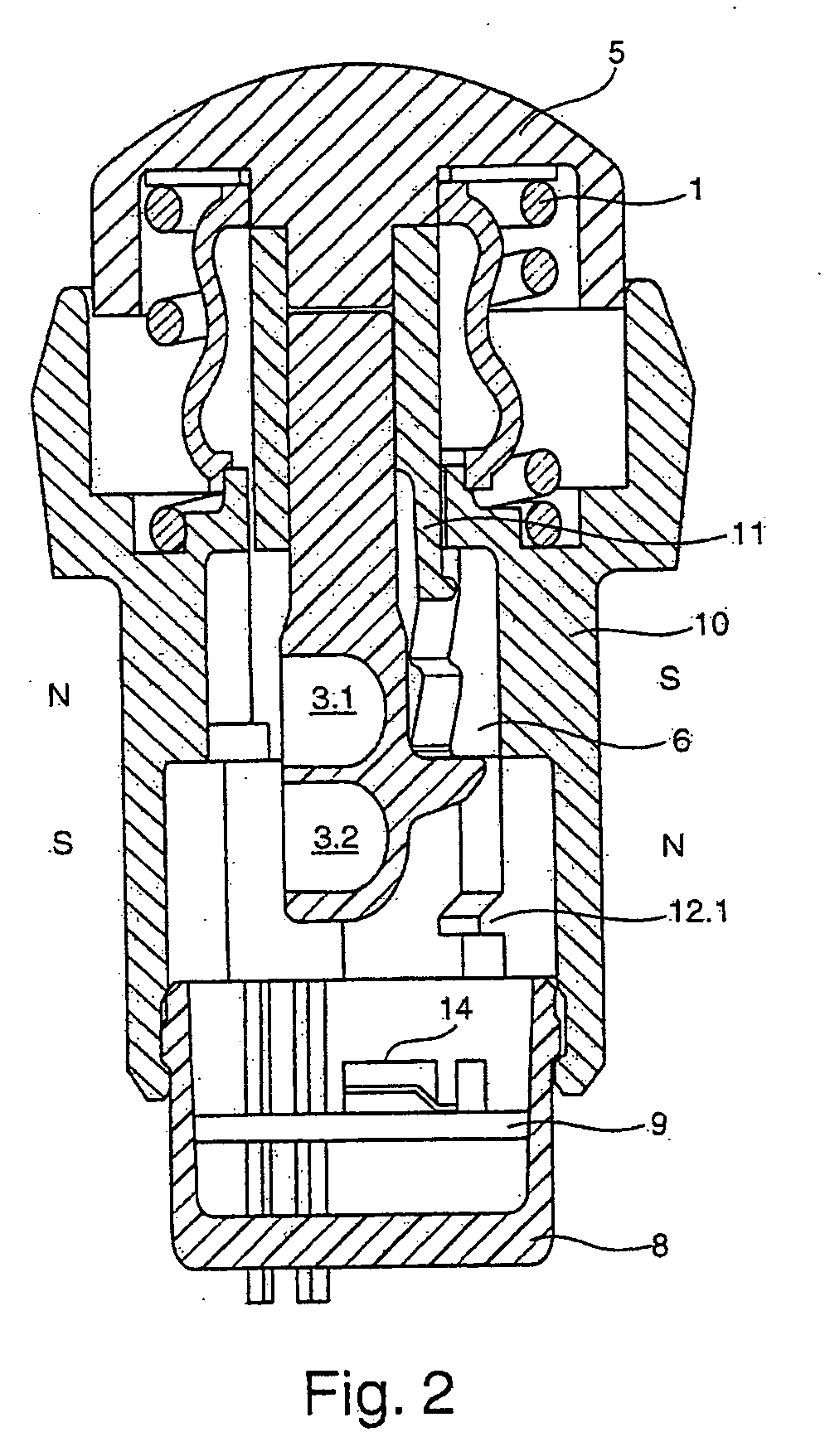Push-button
a push-button and button technology, applied in the field of push-button, can solve the problems of inconfigurable effect push-button, inability to achieve optimum operating reliability, and inability to configure the effect of the push-button, so as to increase the redundancy of the push-button
- Summary
- Abstract
- Description
- Claims
- Application Information
AI Technical Summary
Benefits of technology
Problems solved by technology
Method used
Image
Examples
Embodiment Construction
[0035]The drawings illustrate a push-button 5 having a tappet 13, which is supported so as to be movable in a housing 10 counter to the action of a restoring spring 1. The housing 10 is in the form of a cylindrical sleeve and has, at its upper end, a recess 10.1 for receiving the lower end of the restoring spring 1 which is received, with its other end, in a recess 5.2 which is provided in a push-button cap 5.1 and thereby moves the push-button cap 5.1 or the push-button actuation element into the inactive position or initial position thereof. A torsion spring 11 is constructed at least partially as a sleeve which, on the one hand, is connected to a cylindrical journal 5.3 which is securely connected to the push-button actuation element 5.1 and, on the other hand, has resilient torsion spring elements 11.2. The torsion spring 11 and the tappet 13 may also be one part.
[0036]An air gap 4 is provided between the outer periphery of the push-button actuation element 5.1 and the inner per...
PUM
 Login to View More
Login to View More Abstract
Description
Claims
Application Information
 Login to View More
Login to View More - R&D
- Intellectual Property
- Life Sciences
- Materials
- Tech Scout
- Unparalleled Data Quality
- Higher Quality Content
- 60% Fewer Hallucinations
Browse by: Latest US Patents, China's latest patents, Technical Efficacy Thesaurus, Application Domain, Technology Topic, Popular Technical Reports.
© 2025 PatSnap. All rights reserved.Legal|Privacy policy|Modern Slavery Act Transparency Statement|Sitemap|About US| Contact US: help@patsnap.com



